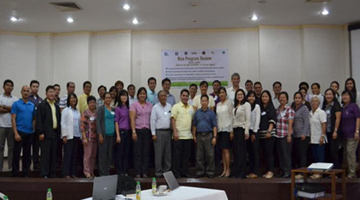 Researchers from six agencies conducted a review of the different research and development projects on rice in line with the industry strategic plan recently.
Researchers from six agencies conducted a review of the different research and development projects on rice in line with the industry strategic plan recently.
The projects are under the programs in line with the Industry Strategic S&T Plan (ISP) for rice which aim to increase rice productivity and modernize rice production and postproduction systems in the country.
Held at the Philippine Council for Agriculture, Aquatic and Natural Resources Research and Development headquarters, the review focused on topics such as rice productivity, mechanization, and postharvest technologies.
One of the projects presented during the review is that of the Philippine Rice Research Institute (PhilRice) which aims to increase farmers’ access to high quality rice seeds through an efficient rice production system.
Under this project, high quality seeds are distributed to farmers of Ilocos Norte, Sultan Kudarat, and Leyte. Farmers are also trained on quality seed, biofertilizers and biopesticide production.
Adoption of high quality seeds resulted to significant increase in farmers’ yield. From the target yield of four tons per hectare, the distributed high yielding varieties produced eight to twelve tons per hectare.
A project on the development and evaluation of plant bio-stimulants and pest and disease elicitors from radiation modified kappa (k)-carrageenan and chitosan for rice, mungbean and peanut was also reviewed during the event. The Philippine Rice Research Institute is heading the program.
Chitosan and carrageenan are radiation degraded polysaccharides that can induce growth in plants and suppress heavy metal stress on plants, among many other physiological processes.
The researchers reported that carrageenan attracts beneficial arthropods and resists rice pests and diseases.
Also presented during the review was a program aimed to enhance rice productivity and reduce cost and losses through improvement and use of appropriate mechanization and postharvest technologies.
The program has ten project components which are led by PhilRice, Philippine Center for Postharvest Development and Mechanization (PhilMech), Metals Industry Research and Development Center (MIRDC), and University of the Philippines Los Baños (UPLB), in collaboration with the Food and Nutrition Research Institute (FNRI) and Metalworking Industries Association of the Philippines.
Program’s expected outputs include a pilot-tested eight-row precision rice seeder, a six-row rice seeding transplanter, a combined conduction-far infrared ray paddy dryer, a transplanter and harvester attachments for hand-tractor, and a huller rice mill with impeller huller.
